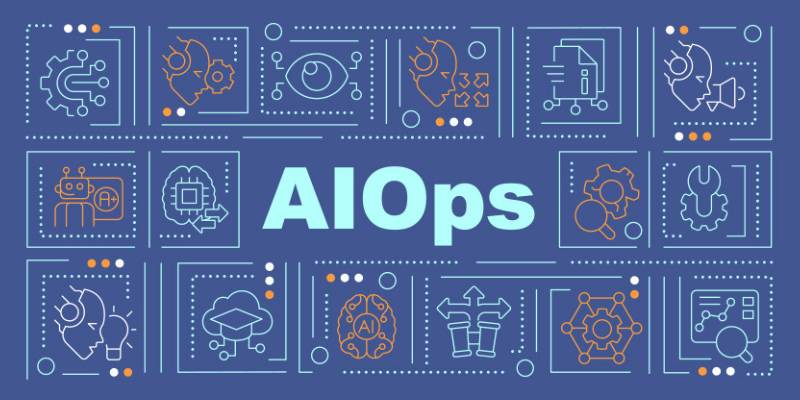Advertisement
Artificial Intelligence (AI) is rapidly transforming how organizations approach uncertainty. In an unpredictable world shaped by economic shifts, global crises, and rapid technological changes, traditional planning often falls short. AI provides a dynamic, data-driven approach to managing uncertainty with speed and accuracy.
From forecasting demand to identifying emerging risks, AI equips leaders with the tools needed to respond proactively and confidently. Businesses that integrate AI into their decision-making processes are more resilient, agile, and better equipped for the future. In this article, we explore the top 7 ways to use AI for effective uncertainty management across modern organizations.
Uncertainty management refers to the process of recognizing, assessing, and proactively addressing unknown or unpredictable variables that can affect an organization's goals, operations, or outcomes. It involves anticipating risks, preparing flexible strategies, and adapting quickly to change. Effective uncertainty management enhances resilience, improves decision-making, and reduces vulnerability to disruptions.
Hospitals utilized AI to predict ICU bed shortages and supply needs during the pandemic, ensuring timely allocation of resources. By analyzing real-time patient admission data, infection rates, and regional case trends, AI systems enabled hospital administrators to forecast resource demands with greater accuracy.
This enabled proactive planning regarding ventilator availability, oxygen supply, and staffing needs, ultimately improving patient outcomes and reducing the risk of overwhelming the healthcare infrastructure.

E-commerce platforms leveraged AI to anticipate supply chain disruptions and adjust pricing and inventory strategies. Using data from global logistics, consumer behavior, and vendor lead times, AI algorithms identified bottlenecks and adjusted procurement timelines to maintain stock availability.
At the same time, dynamic pricing models optimized product pricing based on demand surges, competitor activity, and shipping constraints, allowing retailers to maintain profitability and customer satisfaction during fluctuating market conditions.
Banks utilize AI algorithms to identify early signs of market volatility and adjust their investment strategies accordingly. Machine learning models continuously analyze global economic indicators, news sentiment, and trading activity to identify emerging risks and market shifts.
These insights enabled financial institutions to rebalance their portfolios, adjust risk exposure, and automate trading responses—protecting assets and enhancing decision-making in uncertain and rapidly changing economic environments.

Below is seven powerful ways AI is being used to manage uncertainty effectively:
Predictive analytics, powered by AI, enables organizations to anticipate potential disruptions before they occur. By analyzing historical data and current market signals, AI models can forecast economic downturns, supply chain bottlenecks, or customer churn. These predictions enable leaders to develop contingency plans, adjust their strategies, and mitigate the impact of uncertainty.
AI enables real-time simulation of multiple business scenarios. Organizations can model different outcomes—such as best-case, worst-case, and most likely—based on variables like market trends, policy changes, or demand fluctuations. This empowers leaders to make flexible, informed decisions and allocate resources more effectively in uncertain situations.
AI-powered decision support systems synthesize complex data from various sources, such as finance, operations, and customer behavior, to deliver actionable insights. These systems highlight trends, flag anomalies, and recommend next steps. With machine learning at the core, they improve over time, enabling faster and more accurate decisions during uncertain conditions.
AI tools constantly monitor internal and external data sources, offering real-time alerts about critical changes. Whether it's a sudden shift in consumer behavior or an unexpected regulatory update, AI can detect and communicate issues as they arise. This allows teams to respond swiftly and mitigate risks before they escalate.
When uncertainty strikes—such as during supply chain disruptions or natural disasters—AI-enabled automation helps maintain continuity and stability. AI systems can reroute logistics, auto-generate communications, or rebalance workforce schedules. Intelligent automation reduces manual effort and increases response speed, ensuring smoother crisis management.
AI tools analyze feedback loops, performance data, and external conditions to inform organizational learning and decision-making. This enables businesses to identify effective strategies during uncertain times and adapt accordingly. AI also supports knowledge sharing, helping teams align on best practices and evolve with confidence.
Strategic planning often fails when based on outdated or incomplete information. AI enhances planning by integrating vast datasets into forecasting models, scenario analyses, and simulations. It identifies opportunities, uncovers hidden risks, and ensures that long-term plans remain viable even as circumstances change.
Conclusion
Uncertainty Management is not just about reacting to disruptions; it's about proactively preparing for change. With AI, businesses can transform reactive risk mitigation into a forward-thinking strategy. AI empowers decision-makers with timely and relevant insights, allowing for scalable solutions that adapt to dynamic environments.
The integration of AI into uncertainty management not only strengthens day-to-day operations but also enhances the long-term sustainability of the organization. Start exploring how AI can elevate your uncertainty management strategy—because, in an uncertain world, intelligent action is your most significant advantage.
Advertisement

How NVIDIA’s Neuralangelo is redefining 3D video reconstruction by converting ordinary 2D videos into detailed, interactive 3D models using advanced AI

Learn how AI innovations in the Microsoft Cloud are transforming manufacturing processes, quality, and productivity.

Discover how observability and AIOps transform IT operations with real-time insights, automation, and smart analytics.

How AI Policy @Hugging Face: Open ML Considerations in the EU AI Act sheds light on open-source responsibilities, developer rights, and the balance between regulation and innovation

Explore ChatGPT's 2025 memory updates: how it works, benefits, control options, and privacy insight

Compare AI, ML, DL, and Generative AI to understand their differences and applications in technology today

LangFlow is a user-friendly interface built on LangChain that lets you create language model applications visually. Reduce development time and test ideas easily with drag-and-drop workflows

Discover how an AI platform is transforming newborn eye screening by improving accuracy, reducing costs, and saving live

Microsoft and Nvidia’s AI supercomputer partnership combines Azure and GPUs to speed model training, scale AI, and innovation

Explore the underlying engineering of contextual ASR and how it enables Alexa to understand speech in context, making voice interactions feel more natural and intuitive

Compare Power BI vs Tableau in 2025 to find out which BI tool suits your business better. Explore ease of use, pricing, performance, and visual features in this detailed guide

Discover how 9 big tech firms are boldly shaping generative AI trends, innovative tools, and the latest industry news.